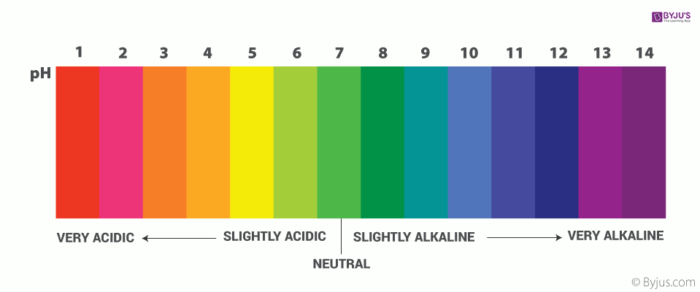You are already aware of the term acids. You have learned about the physical and chemical properties of acids. Some simple ones are – they have a pH below 7, they turn blue litmus paper red, they have a sour taste and they react with alkalis to form salts. One interesting factor about acids is acid strength.
In this article, we will talk about acid strength and the factors which affect it.
What is Acid Strength?
Acid strength is the measure of the ability of the acid to lose its H+ ion.
Table of Contents
It depends on several factors which we will discuss in the subsequent sections.
What are Strong and Weak Acids?
- A strong acid is the one that completely ionizes in a solution whereas, a weak acid only partially ionizes.
- Strong acids are corrosive in nature and cause severe burns when they come in contact with skin.
- But the weak acids are only mildly corrosive and are even present in our food and body.
- Hydrochloric acid and sulphuric acid are examples of the strong acid.
- Ethanoic acid, citric acid (present in citric fruits) and acetic acid (present in vinegar) are a few examples of weak acids.
Factors Determining Acid Strength
As already discussed different acids have different acid strengths. An acid having a greater degree of dissociation behaves as a stronger acid. Now let us understand the factors on which strength of an acid depends. The degree of dissociation of an acid depends on the following two factors.
- Strength of H-A bond
- Polarity of H-A bond
In general weaker the strength of H-A bond, stronger is the acid. Similarly, greater the polarity of H-A bond, stronger is the acid. Both these factors make the dissociation of acid molecules into H+ and A- easier thereby increasing the acidity.
Acid Strength Order
Order of acidic strength may be mentioned here that while comparing elements in the same group of the periodic table the strength of H-A bond is a more important factor in deciding the acidity than its polarity. As the size of A increase on descending a group, H-A bond strength decreases and therefore the acid strength increases. For example, the acid strengths of hydrides of group-17 elements increase in the order.
HF < HCl < HBr < HI
Recommended Videos

Factors Affecting Acid Strength
- It depends on the strength of the H-A bond. The weaker the bond, the lesser the energy required to break it. Hence, the acid is strong.
- The polarity of the H-A bond affects its acid strength. If the bond is highly polar, the proton tends to leave the molecule more easily, making it a strong acid.
- However, bond strength is more important when we consider and compare acid strengths of elements in the same group of the periodic table, using the above two factors.
- Nevertheless, when we compare the acid strengths of elements in the same row, priority is given to the polarity of the H-A bond.
- The atomic size of A also affects the acid strength. As the atom becomes larger, the bond gets weaker. Consequently, acid strength increases.
Frequently Asked Questions – FAQs
What makes an acid strong or weak?
For the most part strong acids have ions in solution, so bonds holding H and A together must be weak. Strong acids split easily into ions. Weak acids often exist as molecules with just a few ions in solution, hence the bonds that bind H and A together must be solid.
What is the most powerful acid?
Carborane superacids can be considered the strongest solar acid in the world because fluoroantimonic acid is, in reality, a mixture of hydrofluoric acid and pentafluoride antimony. Carborane comes with a pH value of -18.
What factors affect acid strength?
The strength of the H-A bond depends on that. The tighter the bond, the more energy it takes to break it down. The acid, then, is solid. The H-A bond polarity determines its acid strength.
Which is the weakest acid?
Citric acid is a mild acid when compared to sulphuric acid and hydrochloric acid since it has very low concentrations of H+ ions in its solution. Citric acid is an organic acid and weak acids are mostly organic acids.
What are the seven strong acids?
Seven strong acids exist. They are chloric acid, hydrobromic acid, hydrochloric acid, hydroiodic acid, nitric acid, perchloric acid, and sulphuric acid. Getting part of the list of strong acids does not however provide any hint of how dangerous or harmful an acid is.
To learn more about acids, their properties, and acidic strength and watch vibrant video lectures on them, download BYJU’S – The Learning App.





Nice